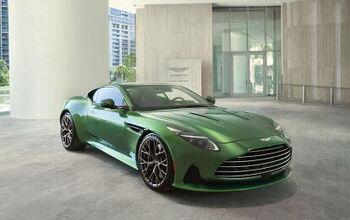Chrysler Loses $370m In Q2 On Loan Payback Costs
Despite a $370m loss, Chrysler’s Q2 and first-half results [ presentation in PDF here] were presented in a relatively upbeat tone, as a number of key metrics showed signs of improving. Chrysler’s revenue was up by over $3b in the second quarter compared to last year, EBITDA hit $1.3b, and “modified operating profit” was $507m, or about 3.7% of net revenues. Depreciation and Amortization costs were up slightly, as were income tax and net interest expenses, but the big loss that pushed Chrysler into the red was a $551m one-time charge associated with Chrysler’s payback of government bailout loans. Gross debt was up by about a billion dollars, to $12.287b, but net debt was down by over a billion to $2.1b, and Chrysler sees greatly reduced interest costs going forward, eliminating $2.6b in planned debt payments this year. And though free cash flow slowed considerably compared to Q2 2010 ($174m compared to $491m), Chrysler finished the half with $10.2b, up from $9.9b at the end of the first quarter.
Chrysler’s revenues were driven upwards largely by a combination of volume (up 81k units worldwide, to 514,000), but pricing played a big role in the revenue increase as well. In fact, I nearly sprayed coffee all over my keyboard when an analyst asked if Chrysler’s pricing was too high in light of tough Japanese pricing measures aimed at rebuilding volume after the tsunami supply interruption. If there’s been an undeniable sign that Chrysler is a new company, that was it… especially when CEO Sergio Marchionne argued that he saw no reason to adjust pricing.
Inventory is creeping upwards, but Chrysler’s execs insist that it is evenly distributed between cars, trucks and SUVs… and as volume increases, the days supply stays low even though absolute inventory is up. Fleet mix is down from 40% in Q2 last year to 32%… still a relatively high number compared to the rest of the industry. Similarly, incentives are down considerably compared to Q2 2010, but at $3,000 per unit, they’re still well above the industry average. But compared to Q2 2010, the average transaction price rose $1,800 while incentives fell $1,100, so progress on this front is still strong.If there’s a challenge though, it’s the fact that much of Chrysler’s strength is coming from SUV sales, an issue that Marchionne deflected by saying he knew Chrysler’s cars were “stopgap measures.” He insists that once Dodge gets into the C-Segment next year, we will be in a position to judge the viability of Chrysler’s small car future, but what happens if gas prices spike between now and then?
Despite getting out from under the government’s “shyster loans,” Chrysler’s costs are going up as it invests in new products like the forthcoming Dodge Caliber replacement, new technology like the forthcoming 8- and 9-speed transmissions, as well as advertising and marketing. The firm has been growing key metrics, and thanks to the bailout, it can survive even while growing slowly. If volume grows steadily, pricing discipline stays strong and gas prices don’t go up to much more, Chrysler could easily build up some momentum as it heads into next year, when the car turnaround will begin in earnest. But, the fact that a half-billion one-time loss was able to push Chrysler nearly $400m into the red shows how precarious the situation is, and overall Chrysler has lost over $250m in the first half. The tightrope walk continues…
More by Edward Niedermeyer
Latest Car Reviews
Read moreLatest Product Reviews
Read moreRecent Comments
- MaintenanceCosts "And with ANY car, always budget for maintenance."The question is whether you have to budget a thousand bucks (or euro) a year, or a quarter of your income.
- FreedMike The NASCAR race was a dandy. That finish…
- EBFlex It’s ironic that the typical low IQ big government simps are all over this yet we’re completely silent when oil companies took massive losses during Covid. Funny how that’s fine but profits aren’t. These people have no idea how business works.
- Ajla Goldman Sachs 🥂
- Rna65689660 DVR and watch all that are aired. Has been this way for 40 years.

































Comments
Join the conversation
Chrysler is not out of the woods yet, but it looks as though Sergio and company are doing a great job with the turnaround so far. The growth in unit sales and transaction prices is impressive in a weak market like this one.
{sigh} I'd love to see a CFO's take on the "modified" numbers being reported. I do know that if they were a publicly traded company they wouldn't be able to twist the numbers around, but I don't see these as being anything special. Their debt went down, because they walked away from the govt money they were not on the hook to replace. That profit is still a loss. I know people inside the company, and what they are saying is absolutely scary. Sergio still hasn't played his hand yet... He has some cards up his sleeve.